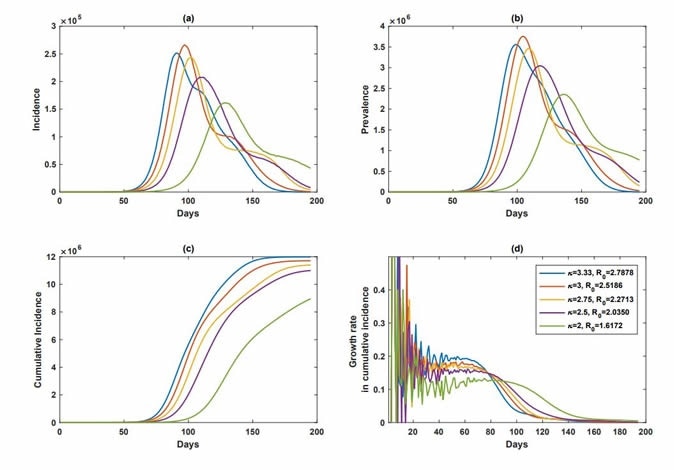The coronavirus disease (COVID-19) global pandemic has rippled across the world, with nearly 423,000 people now infected. Many countries have imposed lockdowns and strict quarantine measures to prevent the spread of the deadly virus.
Now, a new study by a team of researchers at the University of Sydney has revealed that social distancing should be practiced by 80 percent of the population in Australia to halt the spread of the SARS-CoV-2 or severe acute respiratory syndrome coronavirus 2.
The new report sheds light on the importance of social distancing and how it can significantly help combat COVID-19, which has so far taken nearly 19,000 lives worldwide. The Australian government has reiterated its stance on social distancing measures and preventing large crowds in an attempt to reduce the spread of the virus. They recommend that people should stay at home.

Image Credit: EamesBot / Shutterstock
What is social distancing and why is it important?
Most countries shaken by the coronavirus outbreak have implemented social distancing measures, with schools shut down and public places closed. Social distancing means reducing contact of people, with a distance of at least one meter from one person to another.
Social distancing a method to avoid direct close contact with others, therefore reducing the chance of coming into contact with infected persons. A person can also get infected by touching surfaces or objects that are commonly used, such as doorknobs, and tables, and touching the mouth or face without washing the hands. The more space between people, the harder it is for the virus to spread.
At home, social distancing can be practiced by practicing good hand hygiene and respiratory hygiene, avoiding kissing, handshaking, and hugging, and increasing the ventilation in the home. In public places, the government recommends using tap for paying for goods rather than money, avoiding crowds, and sanitize the hands whenever possible.

Calibration of AceMod parameters to the expected growth rate of cumulative incidence C˙ (d), while varying scaling factor κ (i.e, reproductive number R0), with incidence (a), prevalence (b), and cumulative incidence (c).
The study findings
In the study, published online at Arxiv, the team developed an agent-based model for a simulation of the ongoing COVID-19 pandemic in Australia. The team studied the transmission of the virus, accounting for the length of the incubation period, the reproductive number of the virus, and age-dependent attack rates.
The researchers unveiled that if 80 to 90 percent of the population will adhere to social distancing compliance, the COVID-19 pandemic will under control in 13 to 14 weeks. However, compliance of below 70 percent will not succeed for any duration of social distancing.
“If we want to control the spread of COVID-19 – rather than letting the disease control us – at least eighty percent of the Australian population must comply with strict social distancing measures for at least four months,” Professor Mikhail Prokopenko, a Complex Systems academic and pandemic modeling expert, said.
“However, if ninety percent of the population complies, then the duration could be as short as thirteen to fourteen weeks – meaning if we began tomorrow, we could expect control of COVID-19 by July,” he added.
He added that if less than 70 percent comply with strict social distancing, it will be a fruitless effort. More stringent measures imposed earlier can reduce the negative impacts of the illness. In comparison, lax rules will mean a more prolonged and ineffective battle against COVID-19.
Early and strict measures
The study also underlined how crucial early measures are in fighting a pandemic. The team found that for every day the stricter social distancing measures are delayed, the community would need to sustain many more days under a more extended suppression policy.
“There’s good reason for imposing tough measures early on. The longer we delay the peak, the more time our healthcare system has to prepare for it by accessing more resources such as ICU beds, ventilators, antivirals, and trained health workers,” Professor Prokopenko said.
Further, the study highlighted that though school closure is vital in reducing transmission of the virus and it can compensate for 10 percent of a lack of social distancing compliance, it would only delay the peak of the pandemic by about two weeks. It is still important to focus on all age groups, especially adults who still go out despite social distancing measures.
In Australia, the NSW government asked parents to keep children out of school while Victoria has moved to close schools early. Still, Prime Minister Scott Morrison said schools should remain open. There are confusing mechanisms in the spread of the virus, and it is still unclear how the virus affects children.
Australia has reported 2,318 cases and eight deaths linked to COVID-19.
Sources:
Journal reference:
- Chang, S., Harding, N,, Zachreson, C., Cliff, O., and Prokopenko, M. (2020). Modelling transmission and control of the COVID-19 pandemic in Australia. Arxiv. https://arxiv.org/pdf/2003.10218.pdf